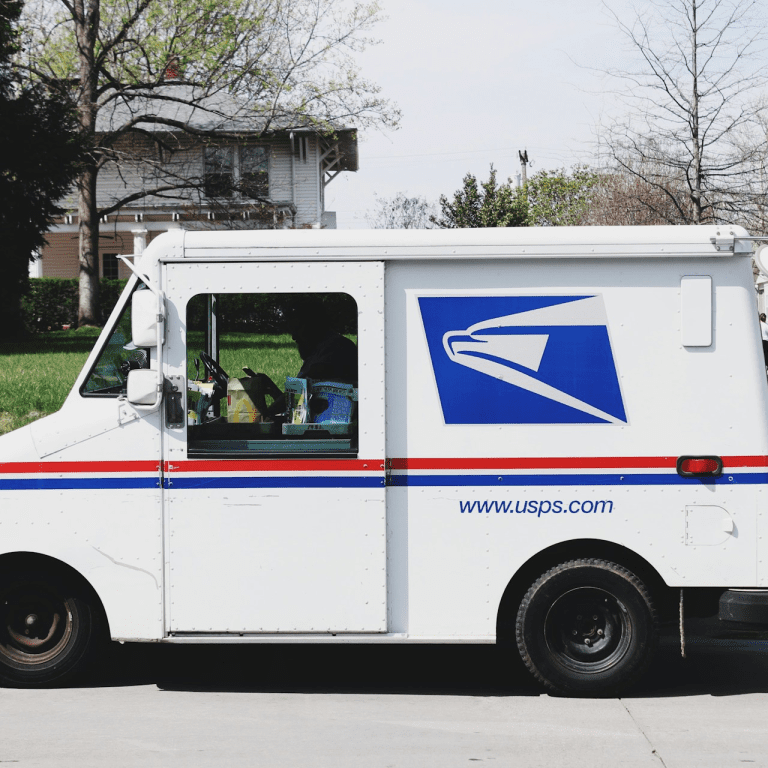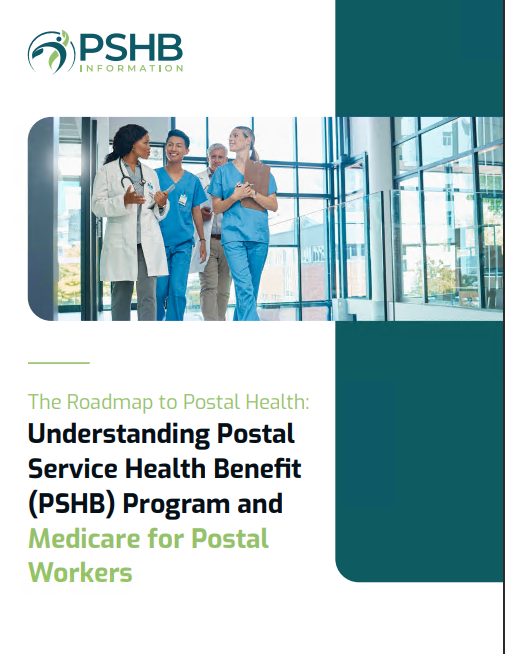Key Takeaways
-
If you’re a USPS retiree or family member who’s eligible for Medicare, you’re automatically enrolled in a Medicare Part D Employer Group Waiver Plan (EGWP) under PSHB unless you opt out—but opting out comes with significant consequences.
-
Refusing EGWP could mean losing your prescription drug benefits and facing higher out-of-pocket costs, plus limited re-enrollment opportunities.
Understanding EGWP in the PSHB Era
Starting in 2025, the Postal Service Health Benefits (PSHB) Program replaces FEHB for USPS employees, retirees, and their eligible family members. A major part of this transition involves the integration of the Medicare Part D EGWP for those enrolled in Medicare.
You don’t need to take separate action to enroll in EGWP if you meet the eligibility criteria. It’s part of your PSHB benefits package if you’re enrolled in Medicare Part A and Part B. The coverage is automatic—but what’s not automatic is your understanding of how vital this benefit really is.
Let’s break it down.
What Is EGWP and Why Does It Matter?
An Employer Group Waiver Plan (EGWP) is a type of Medicare Part D plan specifically designed for retirees with group health coverage through a former employer. It offers:
-
Medicare-compliant prescription drug coverage
-
Coordinated benefits under PSHB
-
Extra protections and subsidies that individual Part D plans don’t usually offer
EGWP is how you get prescription drug benefits once you’re Medicare-eligible under the PSHB program. Opting out removes you from this framework.
Automatic Enrollment for Medicare-Eligible USPS Retirees
If you’re a USPS retiree or a Medicare-eligible dependent under a PSHB plan, you’re automatically enrolled in EGWP in 2025. Here’s how that works:
-
Enrollment is tied to your PSHB plan.
-
No need to sign up separately.
-
You’ll receive information from your PSHB carrier about the EGWP details.
But this seamless enrollment can be disrupted—by your own choice.
Opting Out: What You Need to Know
You can opt out of EGWP coverage, but doing so triggers a chain of consequences. This isn’t like declining a perk—it’s more like refusing essential care. Here’s what happens if you opt out:
-
Loss of prescription drug coverage under PSHB.
-
No standalone drug plan from PSHB—meaning you’re on your own to find an individual Medicare Part D plan.
-
Higher out-of-pocket costs due to loss of coordinated benefits and subsidies.
-
Limited re-enrollment—you may not be able to get back in later, and if you do, you might face waiting periods or penalties.
EGWP vs. Individual Part D: It’s Not a Fair Fight
Choosing to decline EGWP in favor of a standalone Medicare Part D plan is rarely in your best interest. Here’s why:
-
EGWP plans offer enhanced coverage beyond the standard Medicare Part D model.
-
You’re shielded from the late enrollment penalty for Part D when enrolled in EGWP.
-
EGWP plans often cover drugs more generously and include a broader pharmacy network.
-
You benefit from group purchasing power and employer subsidies.
Individual plans simply don’t match the protections or value.
Prescription Drug Costs Under EGWP
Under the PSHB-integrated EGWP, your out-of-pocket costs for medications are better controlled. In 2025, a $2,000 annual cap on prescription drug costs under Medicare Part D is in effect. That means:
-
Once you spend $2,000 out-of-pocket in a calendar year, your plan pays 100% of covered drug costs for the rest of the year.
-
This cap applies automatically when you remain enrolled in EGWP.
-
If you opt out, you may not benefit from this cap under a non-EGWP Part D plan.
What Happens If You Opt Out?
Opting out of EGWP isn’t reversible in the short term. Here’s what you’re likely to face:
-
No prescription coverage under your PSHB plan.
-
No drug reimbursement through PSHB until re-enrollment, which isn’t guaranteed.
-
Loss of coordination between medical and drug coverage, making claims more complicated.
-
Out-of-pocket exposure to drug prices without the protection of employer-negotiated rates.
If you opt out and later decide you made a mistake, you may be forced to wait until the next Open Season and face penalties or reduced access.
Special Features of EGWP Under PSHB
The EGWP under PSHB includes several unique features tailored to Medicare-eligible USPS retirees:
-
$35 insulin cap—You pay no more than $35 per month for each insulin prescription.
-
Expanded network access—Thousands of in-network retail and mail-order pharmacies are included.
-
No need for separate enrollment—You stay covered automatically when you remain in your PSHB plan.
-
Drug formulary coordination—Drugs covered under your medical plan and prescription plan work together.
These features aren’t guaranteed in outside Part D plans.
Timing and Enrollment Windows
Timing is everything when it comes to EGWP. Here’s what you need to know:
-
The Special Enrollment Period for Medicare Part B ran from April 1 to September 30, 2024. If you missed it, you may not be eligible for PSHB in 2025.
-
The PSHB Open Season for 2025 benefits occurred from November to December 2024. That’s when plan elections were made.
-
If you’re newly eligible in 2025 due to age or disability, your EGWP enrollment kicks in automatically with your PSHB plan.
You can only opt out by explicitly notifying your plan, typically through written documentation.
Opting Out Affects More Than Just You
If you’re covering family members under your PSHB plan and you opt out of EGWP, your choice may impact them too. In some cases:
-
Your dependents may lose access to coordinated drug benefits.
-
Your plan may be downgraded to one that excludes prescription coverage.
-
Your spouse may need separate coverage if they are Medicare-eligible.
Every opt-out decision has ripple effects. Be sure to assess the full impact before making your move.
Medicare Enrollment Ties Everything Together
To remain eligible for EGWP through PSHB, you must be enrolled in both Medicare Part A and Part B. Without both:
-
You may lose access to PSHB-integrated EGWP.
-
You might face higher overall medical and prescription costs.
-
You’ll be responsible for coordinating your own drug and medical coverage—usually at a much higher expense.
If you’re not enrolled in Part B yet and you’re Medicare-eligible, this is the time to act.
Re-Evaluating EGWP: A One-Way Door?
In most cases, opting out of EGWP is not something you can undo easily. The opportunity to re-enroll is:
-
Limited to specific Open Seasons
-
Dependent on plan and eligibility rules
-
Potentially subject to underwriting or delay
This isn’t a casual decision. Once you step away from EGWP, returning could be difficult and costly.
Before You Decline EGWP, Ask Yourself…
-
Do I want to manage my own drug plan without employer support?
-
Am I prepared to pay more out of pocket for less coverage?
-
Can I afford to lose the $2,000 annual cap protection?
-
Will this decision affect my spouse or other covered family members?
-
Am I okay with losing drug coverage altogether?
If the answer to any of these is no, it’s best to stay enrolled in EGWP under your PSHB plan.
EGWP Isn’t Just Another Add-On—It’s Core Coverage
As a USPS retiree or eligible family member, EGWP is a built-in part of your PSHB health benefits. It’s not optional in the way people often assume. Yes, you can opt out—but the consequences are steep, and the benefits you lose are hard to replace.
Think of EGWP as a vital piece of your health coverage puzzle. Removing it could make the whole picture fall apart.
Protect Your Drug Benefits and Your Budget
Before you make any decisions about EGWP, take the time to weigh the long-term financial and coverage consequences. Prescription drug coverage under PSHB’s EGWP is comprehensive, coordinated, and capped to protect you.
If you need help understanding how EGWP fits into your overall retirement health benefits, speak with a licensed agent listed on this website for guidance tailored to your situation.








